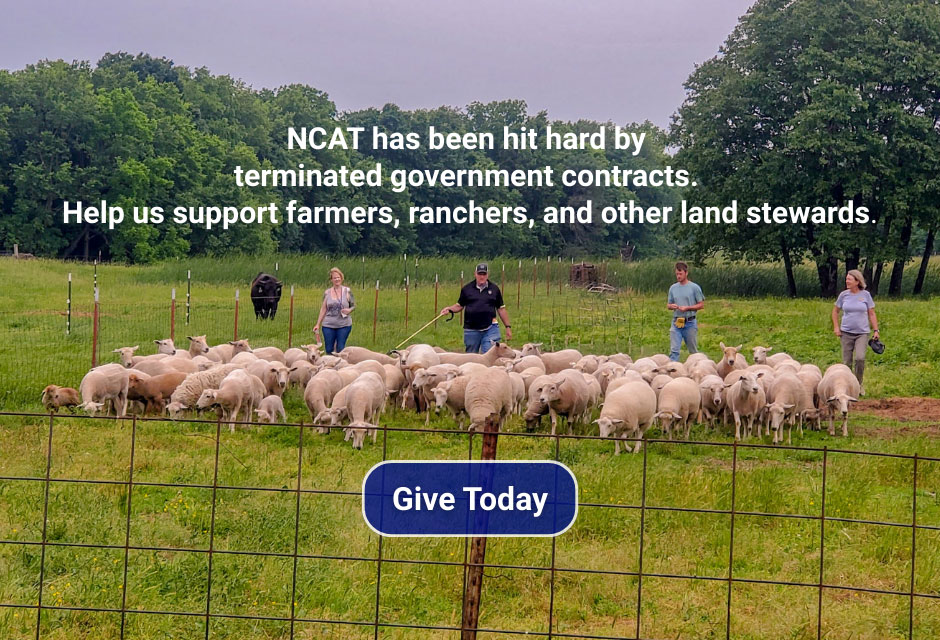Hurricane Helene and Western North Carolina: New Year, New Challenges and Available Resources
 Print This Post
Print This Post
Hurricane Helene struck in late September 2024. When it hit, I happened to be visiting Asheville, North Carolina, and so I rode out the storm there. The torrential rains and wind caused significant damage in every direction—downed trees, major flooding, and landslides. Because I was sheltering in an Airbnb with no food or water, I had no choice but to find my way home to Morganton, North Carolina, about 60 miles east of Asheville. I knew it was going to be hard—I was mentally prepared to run out of gas and sleep in my truck for a few nights. Food, water, fuel, electricity, and communication networks were all either nowhere to be found, or extremely scarce. As I made my quest home, I witnessed the chaos my mountain neighbors were in.
The hurricane’s downpour resulted in severe flooding, eroding topsoil and depositing debris combined with hazardous materials across businesses, homes, and farmlands. In some areas, fields were buried under as much as three feet of sediment, debris, and gravel, rendering them unfit for immediate cultivation. This loss of fertile topsoil will pose long-term challenges for crop production and soil health.
Farmers faced dire situations. The devastation of roads further isolated communities, complicating recovery efforts. Along my journey, I saw cows running loose amongst the unnatural debris littering the swollen, angry rivers. I thought about my farm and how the barn I built had likely collapsed on top of my goat herd. In the aftermath, farmers lost hundreds of animals, feed, and related infrastructure, leading to substantial economic losses (estimates of over 3 billion dollars) for the farming community.
In response to the disaster, I am thankful for several government programs that have been mobilized to assist affected farmers:
USDA Assistance: the U.S. Department of Agriculture (USDA) offers a suite of programs to help producers recover their operations. These include the Emergency Loan Program, which provides low-interest loans to farmers recovering from natural disasters, and the Emergency Conservation Program, assisting with the rehabilitation of farmland, the Tree Assistance Program, and a slew of other helpful programs. Click here for a comprehensive list.
North Carolina Department of Agriculture and Consumer Services (NCDA&CS): NCDA&CS has established a hotline to connect farmers with resources for agricultural emergencies related to the storm. Farmers can call 866-645-9403 for assistance. Additionally, the department has opened a Disaster Hay and Livestock Resources Assistance Portal to connect suppliers with those in need. The Agronomic Division is waiving all predictive and diagnostic lab fees, including Soil Testing, Plant Tissue Analysis, Nematode Assay, Waste and Compost Analysis, Solution Analysis and Soilless Media Analysis for any of the 27 counties impacted by Hurricane Helene. The fee waiver will remain in effect until June 30, 2025.
Soil and Water Conservation Assistance: Recognizing the extensive soil erosion, the North Carolina Cooperative Extension has deployed Soil Strike Teams to help farmers assess land damage and develop conservation plans to restore soil health and prevent future erosion. Contact your local Soil and Water Conservation District and Natural Resources Conservation Service for more information. Use this Service Center Locator to find an office in your area.
Federal Emergency Management Agency (FEMA): Farmers may also be eligible for FEMA assistance, including grants for temporary housing and home repairs, low-cost loans to cover uninsured property losses, and other programs to help individuals and business owners recover. Submit applications online at disasterassistance.gov.
Beyond government programs, organizations like the Carolina Farm Stewardship Association (CFSA) are offering free technical assistance to help farmers recover and build resilience for the future. Services include access to essential equipment, guidance on sustainable farming practices, and support in navigating recovery resources.
A few months before Hurricane Helene hit, I was in Arkansas when a tornado touched down and wreaked havoc in its path. I posed the question to a local Arkansas farmer, “Who helps farmers recover after a natural disaster?” I have now discovered for myself what happens when natural disasters strike.
Within the first days and weeks that have now turned into months of recovery, I saw firsthand who has the most impact. It’s you. It’s your neighbors, your community. It’s the kindness of strangers. On the backroads of our mountains, no one was waiting around for FEMA to arrive. Locals operated privately owned heavy machinery and farm tractors, clearing and scraping public roads. Locals prioritized cutting trees out of roads so emergency vehicles and lost souls like me could carry on in all the directions we were beckoned.

One of Danielle’s Nubian goats gives her a nuzzle. Photo: Danielle Crocker.
The road to recovery for western North Carolina and our farmers is challenging, but with the combined efforts of willing individuals, local communities, organizations, and government agencies, there is hope for rebuilding and for future resilience against such natural disasters.
As I look to the new year, I am thankful to be alive and unharmed. Not to mention, my goats and their barn were standing strong! My orchards and nursery were in complete disarray due to wind damage, but even so, I was spared much of the grief many others are still battling. I hope we all find something to be grateful for and count our lilies together this year.

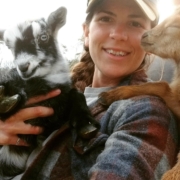

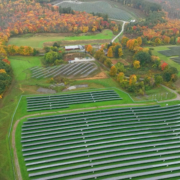

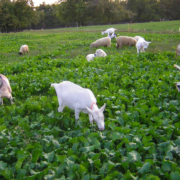
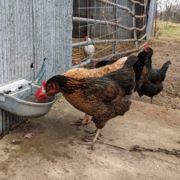
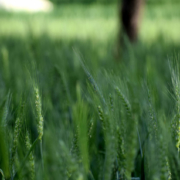
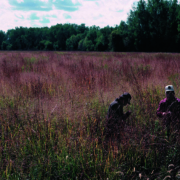

 NCAT
NCAT